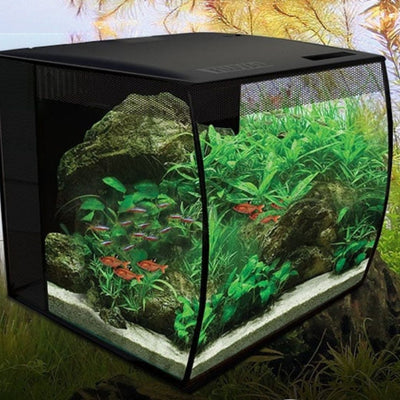
Are you tired of constantly debating whether to feed your cat wet food or dry food? Well, it's time to put an end to the dilemma and discover the perfect balance that can revolutionise your feline friend's diet.
Mixed feeding, the practice of combining wet and dry food, offers a myriad of benefits that go beyond simply satisfying your cat's taste buds. In this article, we'll delve into the advantages of mixed feeding for cats, including improved hydration, dental health, and weight management.
We'll also debunk common myths surrounding this feeding method and share tips on how to transition your cat to a mixed feeding diet seamlessly. So, get ready to unlock the secret to a healthier and happier cat with the perfect balance of wet and dry food!
What is mixed feeding for cats?
Mixed feeding is the practice of combining wet and dry food in a cat's diet. It offers the best of both worlds, providing the nutritional benefits of both wet and dry food in one meal. Wet food is high in moisture content, while dry food is convenient and helps maintain dental health. By combining the two, you ensure that your cat receives a well-rounded diet that meets their specific needs. The ratio of wet food to dry food can vary depending on your cat's preferences and dietary requirements. Some cats may enjoy a 50/50 mix, while others may prefer a higher ratio of wet food to dry food. Experimentation and observation will help you find the perfect balance for your feline friend.
Mixed feeding can be particularly beneficial for cats who struggle with urinary tract issues or dehydration. The high moisture content in wet food helps keep your cat hydrated, reducing the risk of urinary tract problems and promoting kidney health. Additionally, the combination of wet and dry food can help prevent obesity, as cats tend to eat less when consuming wet food due to its higher satiety value. It also provides a variety of textures and flavours, making mealtime more enjoyable for your cat.
The benefits of mixed feeding
Improved hydration
Cats are notorious for having low thirst drives, which puts them at risk of dehydration, especially if they rely solely on dry food. By incorporating wet food into their diet, you increase their moisture intake, ensuring proper hydration. This is particularly crucial for cats with a history of urinary tract issues, as increased water consumption can help prevent future problems. There are specialised formulas' available to support cats that are prone to UTI's. Learn more about them here.
specialised formulas' available to support cats that are prone to UTI's. Learn more about them here.
You can also consider adding a nutritious bone broth to your cats dry food.
Incorporating meal toppers into your pet's diet can be a simple and rewarding way to enhance their meals and provide them with the nutrition they need.
Dental health
Dry food has long been touted as beneficial for dental health due to its abrasiv e texture that helps remove plaque and tartar from the teeth. However, recent studies have shown that the abrasive action of dry food alone may not be sufficient to maintain optimal dental health. By combining wet and dry food, you provide a more balanced approach to dental care. The wet food helps to clean the teeth and gums while the dry food provides the necessary chewing action to promote dental hygiene.
e texture that helps remove plaque and tartar from the teeth. However, recent studies have shown that the abrasive action of dry food alone may not be sufficient to maintain optimal dental health. By combining wet and dry food, you provide a more balanced approach to dental care. The wet food helps to clean the teeth and gums while the dry food provides the necessary chewing action to promote dental hygiene.
Weight management
 Obesity is a common problem among cats, and it can lead to a variety of health issues, including diabetes, joint problems, and heart disease.
Obesity is a common problem among cats, and it can lead to a variety of health issues, including diabetes, joint problems, and heart disease.
Mix feeding can help manage your cat's weight by providing a lower-calorie option through the wet food while still allowing them to enjoy the benefits of dry food. The increased moisture content in wet food also helps your cat feel fuller for longer, reducing the likelihood of overeating.
Understanding the nutritional needs of cats
To ensure your cat receives a balanced diet, it's important to understand their nutritional needs. Cats are obligate carnivores, which means they require a diet that is rich in animal protein. Both wet and dry cat foods can meet these requirements, but it's crucial to choose high-quality options that provide all the essential nutrients your cat needs.
When selecting wet and dry cat food, look for products that list real meat as the primary ingredient. Avoid foods that contain fillers, artificial additives, and excessive carbohydrates. Cats require a diet that is high in protein and low in carbohydrates to mimic their natural diet in the wild.
It's also important to consider your cat's age, activity level, and any specific dietary requirements they may have. Kittens, for example, require more protein and calories than adult cats, while senior cats may benefit from a diet that supports joint health. Our team can help you determine the best mix feeding plan for your cat's individual needs.
Choosing the right wet and dry cat food
With a plethora of options available in the market, choosing the right wet and dry cat food can be overwhelming. Here are some key factors to consider when making your selection:
Quality ingredients
 Opt for cat foods that contain high-quality, natural ingredients. Look for real meat as the primary ingredient, such as chicken, turkey, or fish. Avoid products that contain meat by-products or fillers like corn, wheat, or soy.
Opt for cat foods that contain high-quality, natural ingredients. Look for real meat as the primary ingredient, such as chicken, turkey, or fish. Avoid products that contain meat by-products or fillers like corn, wheat, or soy.
Use a meal topper to add some variety to meals. We recommend cat vitality gravy, a a pet supplement made with premium New Zealand ingredients such as: green lipped mussels, free range chicken and fish.
Complete and balanced nutrition
Ensure that the cat food you choose meets the Association of American Feed Control Officials (AAFCO) guidelines for complete and balanced nutrition. This ensures that your cat receives all the essential nutrients they need to thrive.
Age and specific requirements
Consider your cat's age and any specific dietary requirements they may have. Kittens, adult cats, and senior cats have different nutritional needs, so choose a cat food that is specifically formulated for their life stage. If your cat has any health issues, ask one of our knowledgeable team members for recommendations on specialised diets.
Texture and flavour preferences
Cats can be picky eaters, so it's important to consider their texture and flavour preferences. Experiment with different brands and flavors to find the ones that your cat enjoys the most. Mixing wet and dry food can provide variety and cater to your cat's individual tastes.
Remember to introduce new foods gradually to avoid digestive upset. Start by mixing a small amount of the new food with your cat's current diet and gradually increase the ratio over a week or two.
How to introduce mix feeding to your cat
Introducing mix feeding to your cat requires patience and a gradual transition. Here are some steps to help you make the switch smoothly:
1. Start by mixing a small amount of wet food into your cat's dry food. Gradually increase the ratio of wet food to dry food over several days or weeks, depending on your cat's tolerance and acceptance.
2. Monitor your cat's response to the new diet. Look out for any signs of digestive upset, such as vomiting or diarrhea. If your cat experiences any adverse reactions, consult with your veterinarian to determine the best course of action.
3. Slowly decrease the amount of dry food in your cat's diet as they become more accustomed to the wet food. Aim for a balanced mix that meets their nutritional needs while maintaining their weight.
4. Be patient. Some cats may take longer to adjust to a mix feeding diet than others. Allow your cat time to adapt, and provide plenty of positive reinforcement and encouragement during the transition.
Monitoring your cat's health and adjusting their diet
Once you have successfully transitioned your cat to a mix feeding diet, it's important to monitor their health and make any necessary adjustments to their diet. Regular visits to the veterinarian can help ensure that your cat remains in optimal health and that their dietary needs are being met.
Keep an eye on your cat's weight to prevent obesity or excessive weight loss. Adjust the ratio of wet food to dry food accordingly to maintain a healthy body condition. If your cat has any specific health issues, such as allergies or sensitivities, work closely with your veterinarian to identify the best mix of wet and dry food to accommodate their needs.
Common misconceptions about mix feeding
There are several common misconceptions surrounding mix feeding for cats. Let's debunk some of these myths:
1. Myth: Mixing wet and dry food leads to digestive issues.
Fact: When introduced gradually, mix feeding can be well-tolerated by most cats. It's important to monitor your cat's response and make any necessary adjustments to ensure their digestive health.
2. Myth: Cats will only eat wet food once they have tried it.
Fact: Cats can be resistant to change, especially when it comes to their food. However, with a gradual transition and patience, most cats can adapt to mix feeding and enjoy the benefits of both wet and dry food.
3. Myth: Mix feeding is more expensive than feeding only one type of food.
Fact: While mix feeding may require purchasing both wet and dry cat food, it doesn't necessarily mean it's more expensive. By choosing high-quality, nutrient-dense cat foods, you can provide a balanced diet without breaking the bank.
4. Myth: Wet food is superior to dry food, and vice versa.
Fact: Both wet and dry cat foods have their own advantages and disadvantages. By combining the two, you can provide a more well-rounded diet that meets your cat's specific needs.
Tips for successful mix feeding
To ensure a successful mix feeding experience for both you and your cat, consider the following tips:
1. Gradually introduce mix feeding to allow your cat to adjust to the new diet.
2. Monitor your cat's response to the new diet and make any necessary adjustments.
3. Choose high-quality, natural cat foods that provide complete and balanced nutrition.
4. Consider your cat's age, activity level, and any specific dietary requirements when selecting wet and dry food.
5. Experiment with different brands, flavours, and textures to find what your cat enjoys the most.
6. Keep an eye on your cat's weight and adjust the ratio of wet food to dry food as needed to maintain a healthy body condition.
Finding the perfect balance for your cat's diet
Mix feeding offers a multitude of benefits for cats, including improved hydration, dental health, and weight management. By combining wet and dry food, you can provide a well-rounded diet that meets your cat's nutritional needs while satisfying their taste buds. Remember to choose high-quality cat foods that provide complete and balanced nutrition, and always check with our team for personalised recommendations.
Introduce mix feeding gradually, monitor your cat's response, and make any necessary adjustments to their diet. Keep in mind that every cat is unique, so finding the perfect balance may require some trial and error. With patience, persistence, and a focus on your cat's well-being, you can unlock the secret to a healthier and happier cat with the perfect balance of wet and dry food.
© weknowpets 2023






